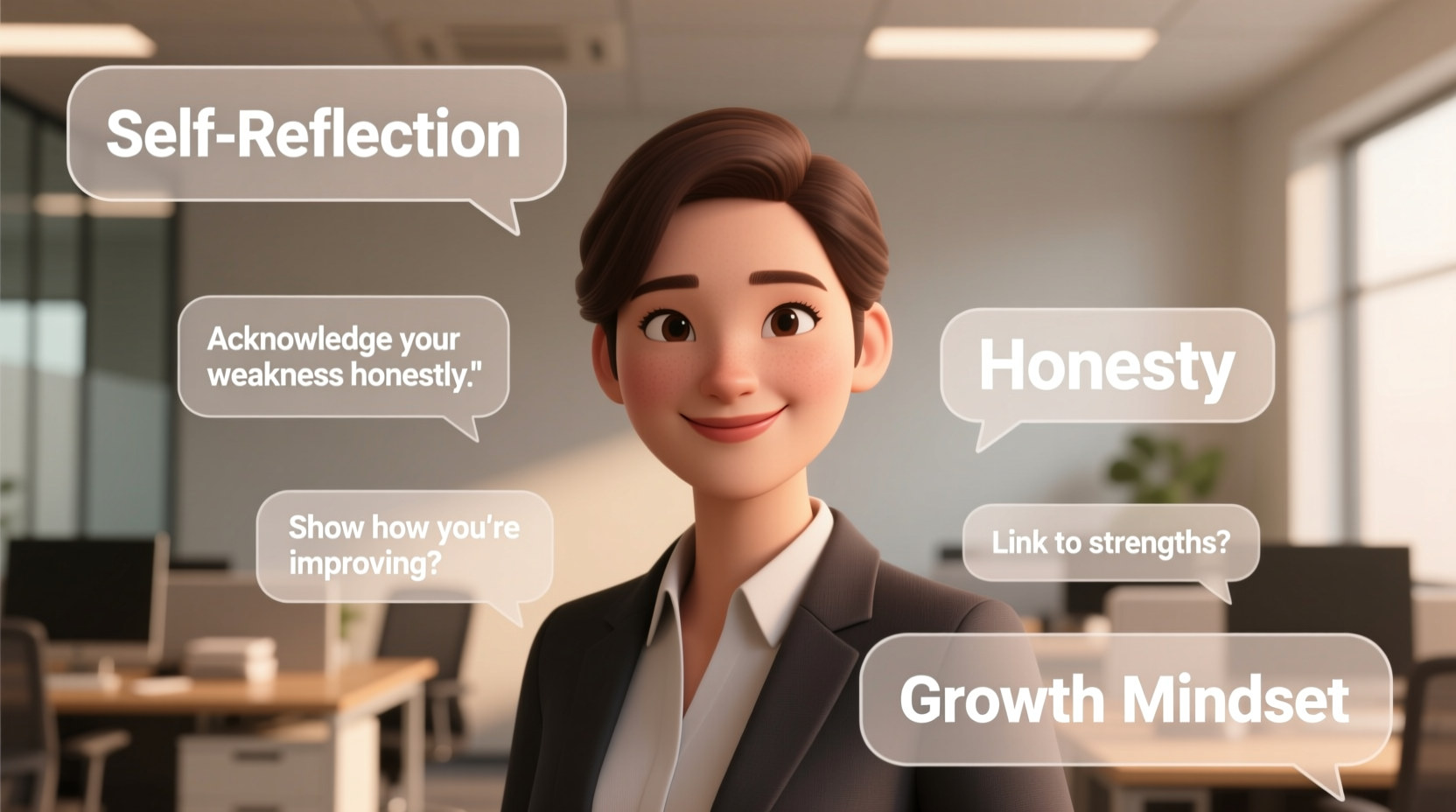One of the most common—and often dreaded—questions in job interviews is “What is your greatest weakness?” While it may feel like a trap, this question isn’t designed to expose flaws. Instead, hiring managers use it to assess self-awareness, honesty, and your commitment to professional growth. The key isn’t to avoid having weaknesses, but to frame them in a way that demonstrates maturity and initiative.
The best answers don’t hide shortcomings; they transform them into narratives of improvement. Done right, your response can actually strengthen your candidacy by showing emotional intelligence and a growth mindset. Here’s how to craft an authentic, strategic answer that turns vulnerability into value.
Understand What Interviewers Are Really Looking For

When interviewers ask about weaknesses, they’re not searching for reasons to disqualify you. They want to see:
- Self-awareness: Can you objectively evaluate your performance?
- Honesty: Are you willing to admit imperfection without deflecting blame?
- Growth orientation: Do you take active steps to improve?
- Fit: Does your weakness conflict with core requirements of the role?
A strong answer acknowledges a real limitation while highlighting what you’ve done—or are doing—to address it. It shows you’re reflective, proactive, and committed to excellence.
“Candidates who can articulate a genuine weakness and describe concrete steps to overcome it stand out. It signals humility and drive.” — Sarah Lin, HR Director at TechForward Inc.
Step-by-Step Guide to Crafting Your Answer
Creating a compelling response takes preparation. Follow this five-step process to develop an answer that feels natural and effective.
- Reflect on Real Feedback: Review past performance reviews, peer feedback, or personal observations. Identify areas where you’ve been challenged—public speaking, time management, delegation, etc.
- Pick a Relevant but Non-Critical Weakness: Choose something that doesn’t disqualify you for the role. For example, avoid saying you struggle with attention to detail when applying for an accounting position.
- Show Progress, Not Just Problem: Focus on what you’re doing to improve. Did you enroll in a course? Use a new tool? Seek mentorship?
- Keep It Concise: Aim for a 30–45 second response. Be specific, but don’t over-explain.
- Practice Aloud: Rehearse until your answer sounds confident and natural, not rehearsed.
Do’s and Don’ts When Discussing Weaknesses
| Do | Don’t |
|---|---|
| Choose a real weakness that’s not central to the job | Claim you have no weaknesses |
| Explain how you’re actively improving | Blame others or external factors |
| Use specific examples (e.g., missed a deadline once) | Be overly negative or self-deprecating |
| Frame it as a work in progress | Pick a fatal flaw (e.g., poor communication for a client-facing role) |
| Align improvement efforts with professional development | Use humor or deflect (“I work too hard”) |
Real Example: Turning a Weakness into a Strength
Jamal, a marketing specialist interviewing for a senior role, was asked about his biggest weakness. He responded:
“In the past, I sometimes struggled with delegating tasks because I wanted to ensure quality. This led to bottlenecks during campaign launches. After feedback from my manager, I realized I wasn’t trusting my team enough. So, I took a project management workshop focused on delegation and began using task-tracking tools like Asana. I also started holding weekly check-ins instead of micromanaging daily. Over the last six months, my team’s delivery speed improved by 30%, and morale increased. I’ve learned that empowering others actually elevates results.”
This answer works because it names a real issue, links it to business impact, and shows measurable improvement. It reframes a potential red flag into proof of leadership growth.
Checklist: Building Your Ideal Response
Before your next interview, run through this checklist to refine your weakness answer:
- ✅ Identified a genuine, non-critical weakness
- ✅ Connected it to a specific situation or feedback
- ✅ Described actionable steps taken to improve
- ✅ Avoided clichés or deflection
- ✅ Kept the focus on growth, not failure
- ✅ Practiced delivering it naturally
- ✅ Verified it aligns with the job description
Frequently Asked Questions
Can I say I’m bad at interviews when asked about weaknesses?
While honest, this can backfire—it implies you’re struggling in the very moment you need to perform. If you’re nervous, reframe it positively: “I used to get anxious in high-pressure conversations, so I’ve been practicing mock interviews and mindfulness techniques. I’ve seen a big improvement in my clarity and confidence.”
Should I mention a weakness that’s listed in the job description?
No. If the role requires strong Excel skills, don’t say spreadsheets are your weak point—even if you’re learning. Instead, pick a different area and save skill gaps for training discussions later. Focus on soft skills or adjacent competencies you’re developing.
How recent should the weakness be?
Ideally, refer to something from the past 1–2 years that you’re actively addressing. Avoid ancient history (“In college, I was late to class”) or current, unresolved issues (“I still can’t manage my workload”). The goal is to show you’re in the process of getting better—not stuck in the problem.
Final Thoughts: Reframe the Question
Instead of seeing “What’s your weakness?” as a threat, treat it as an invitation to demonstrate professionalism. The most memorable candidates aren’t those with flawless records—they’re the ones who’ve faced challenges head-on and grown from them.
Your answer doesn’t need to be perfect. It needs to be real. By choosing a thoughtful weakness and showing how you’re overcoming it, you shift the conversation from deficiency to development. That’s the mark of someone ready to learn, adapt, and contribute meaningfully.









 浙公网安备
33010002000092号
浙公网安备
33010002000092号 浙B2-20120091-4
浙B2-20120091-4
Comments
No comments yet. Why don't you start the discussion?